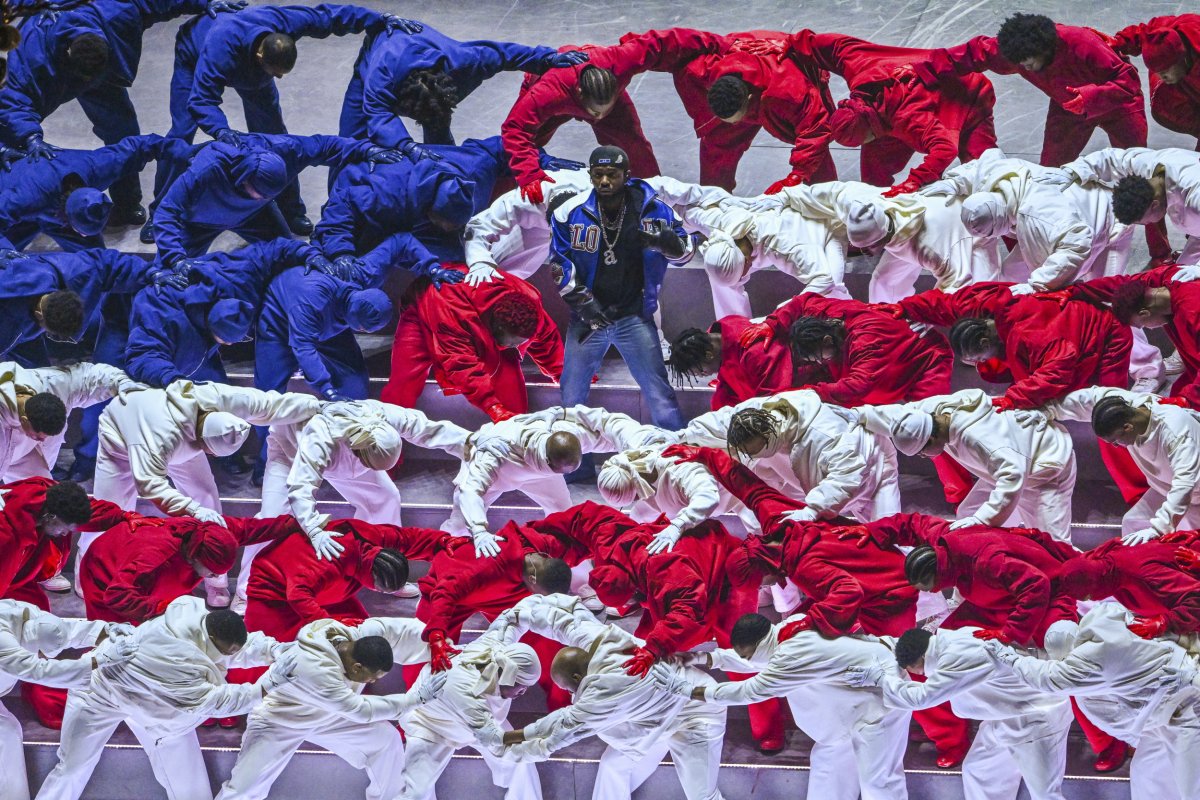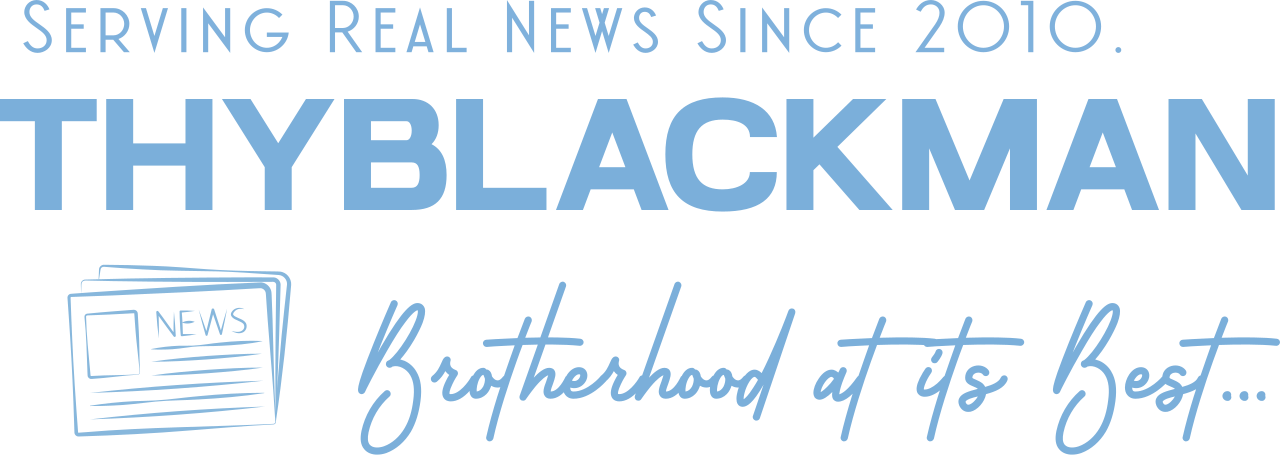(ThyBlackMan.com) For millions of people, the Super Bowl is the most highly anticipated event of the year — in sports or otherwise.
With all due respect to baseball fans, it is the culmination of America’s actual favorite pastime. (The numbers don’t lie.) For other people, the “big game” is simply an excuse for presenting a half-time extravaganza — much like airports are an excuse for the money-printing prowess of parking garages.

This year’s show featured Kendrick Lamar, the diminutive superstar rapper whose biggest hit, “Not Like Us,” was ubiquitous last year. Seriously, I’m not sure that there was anywhere on the planet where one could escape that song’s hypnosis-inducing beat, brought to us courtesy of DJ Mustard.
While the 1968 Mexico Olympics will forever be remembered most for Tommie Smith’s and John Carlos’s silent protest, New Orleans’ Super Bowl 59 will always be hailed (and lamented) for Lamar’s stunning visual ingenuity and irrepressible aural virtuosity. If you didn’t actually witness Lamar’s performance, there is virtually no chance that you haven’t heard about it.
Lamar transported the rawness of the street to the highly managed corporate stage, inviting all of America (and much of the world) into a discussion of Black life. By and large, young people knew what Lamar was saying. (I mean that figuratively, not just literally.)
On the other hand, many of us who are “of a certain age” had difficulty understanding much of what Lamar was attempting to express. (I mean that literally, not just figuratively.) Having grown up with RUN-DMC and LL Cool J, I often find myself having to find lyrics online in order to decipher what an artist is saying.
In any case, Lamar breathed new life into the phrase “staging a performance.” His unique revue was replete with so much symbolism that one can easily be forgiven for having missed much of it when watching the performance in real time. Some of the symbolism was heavy-handed; some of it was almost imperceptibly subtle.
The symbolism included the design of the stage. At one point, the platform was transformed into an outsized PlayStation controller. As writer Touré points out, those who were “in the game” (i.e., on the stage) did not have the ability to see the entire platform, let alone those who were “doing the controlling.” Lamar was suggesting that the same is true for those of us who are “on stage” in real life.
Then there was Samuel “Uncle Sam” Jackson, who intoned (with his incomparable yelling), “Don’t you know how to play the game?” Jackson’s Uncle Sam was the personification of conservative white Americans’ fear — and Black Americans’ admonition — regarding Black men being too black (or too “ghetto” in his words).
For many, Jackson’s performance called to mind his turn as “Stephen” in Quentin Tarantino’s controversial “Django Unchained.” (For the uninitiated, Stephen was a proverbial “house negro” whose primary responsibility was to serve “massa” at the expense of his fellow enslaved people.)
At another point, the stage became a prison yard, referencing America’s over-incarceration of Black men, who represent nearly a third of all men who are sentenced to federal or state prison at some point in their lives. Most of them have been damned twice, the first time being when they were born into a socioeconomic system that is designed for them to fail.
In a nod to a global phenomenon that no border protection law can banish, Lamar had the stage become a version of Squid Game. That reference highlighted the depth of resilience and the height of innovation that African Americans have had to display in order merely to survive a rigged system. That “scene” saw Lamar conjure both the seething outrage of Bernie Sanders and the life-preserving humor of the late Bernie Mack.
Of course, Lamar also highlighted America’s most important symbol — the flag. He had Black men dress in red-white-and-blue tracksuits to simulate the flag. This brought out strong reactions from the MAGA crowd, who wasted no time in becoming duly offended. It is surreal that the people who view the Jan. 6 insurrectionists as “patriots” were so appalled by Black men who were figuratively “wrapped in the flag.”
It was an inspired response to the controversy regarding DEI. It sent an unmistakable message that the law can never eradicate efforts to make America live up to what its founders wrote on paper — even if most of them didn’t have Black folks in mind when enumerating liberty. Yes, those who are legislating against DEI have the power of the pen. But they’re always going to bump up against the power of the purse, as well as the power of perseverance.
Kendrick Lamar’s performance wasn’t just musical; it was magical.
It wasn’t the legerdemain of men in suits pulling white rabbits from black hats; rather, it was the portrayal of Black men in tracksuits pulling pride from prejudice. In the words of Dr. Ken Harris, Lamar succeeded in “turning a diss track into a victory lap.”
In short, Lamar put Black folks up on stage while concurrently putting white folks “up on game.” Thus, it was appropriate for Lamar to shut things down by having “GAME OVER” displayed in giant letters.
Like the Philadelphia Eagles, Lamar left nothing on the field.
Written by Larry Smith
















Wow. Just remember that the majority of Black people’ ancestors were brought here by white people. They don’t know where “their own country” is. And if your ancestors were immigrants, why don’t you go back?
Good Article Mr. Smith and two good comments left; But, we all fail to see the big picture of the NFL and NBA secret discrimination program against black America. Indeed, 75% of NBA and NFL Players are black; Yet, Black people do not owned or control any portion of this multy billion dollar corporation.
Indee, Black people were in the field either playing, dancing, signing, cleaning etc.. But the real owners of this sport business were sitting in the private cubicle watching all these black people make a fool of themselves and entertain America: Yes these owners were all Caucasians, Jewish and Middle easterns who have never play any sports, dance or know anything about the black music and the black culture; but they controlled every aspect of these money making machine, whereas, the black athletes and entertainiers are the slaves enriching the white american system.
Sadly, many blacks and many house negros will not see the point but in time your wake up call is nearing and white people are making sure to you stay in your place and never be allowed to owned anything on your owned or partner up with any other black athtlete to owned any sport teams that bring millions to billions to the industry.
African Americans must wake up and undertand that we will never be allowed or giving any power that could free our community from the grasp of white Supremacy, because we are the builders and we set the trend in music, sports, entertainment, food around the world. Black people built America and we thaught these Mzungus how to cook, clean and bathe during the slavery days and Jim crow era. We built the roads, farm the crops, babysit the white children of the slavemasters, fed the animals, took care of the land and built Washington DC and the white house.
African Americans must separated from Racist white America and create our own black wall streets like we had in the past before they were all burn down and destroy by racist white men and white women who are infected with the disease of madness, insanity, insecurity, fear and the shortcoming of having small private parts.
Black men, Black women and Black LGBT must come together and depostir all our money in black owned banks and financial institutiions. We must only sent our children to black owned private schools and HBCU’S. We must only spend our money in black owned businessess, We must only required and request the services of black doctors, nurses, dentist, electricians, plumbers, carpenters, gardeners, tutors, babysiters, mechanics etc.. everything that we do and need must be done with black people only.
Remember if 47 milllion black men , women, LGBT, children deposit $100 dollars in a black owned bank a month it will give us a totla of $4.7 billion dollars a month and if we do it for 12 months it will give us a total yearly network of over $56 billion dollars which is more money that a dozen African and Central American countried yearly GDP. We can do it black America and we can start by investing and depositing our check in the black Banks nationwide. Remember there are over 21 black owned banks in America and over 200 owned banks in Africa and in the Caribbean. So lets start our move to separtation from racist white America and Ilegal migrants.
You’re an idiot!!! This country would never be without all of black and brown people. Whites couldn’t raise their own children without people of color.
Cool story – so are blacks finally going to go to their own country or push for black nationalism? Or are blacks still going to be totally dependent on White people taking care of them inside White countries?